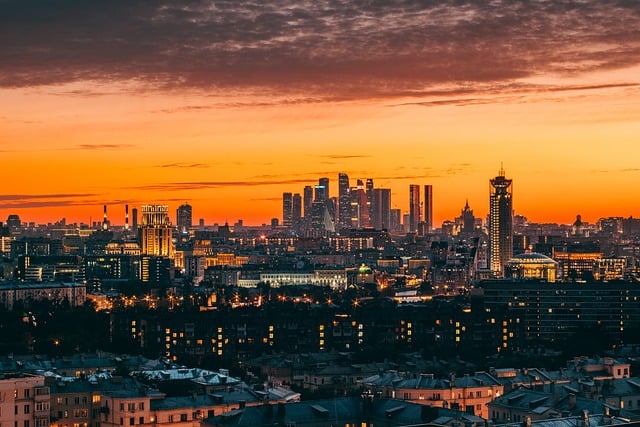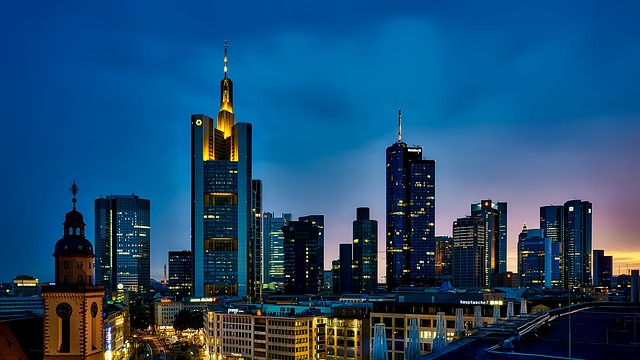Karachi’s Air Quality: Gohar Green City’s Impact & Health Concerns
Karachi, Pakistan's bustling metropolis, faces severe air pollution challenges due to high popu…….

Karachi, Pakistan's bustling metropolis, faces severe air pollution challenges due to high population density, industrial activities, and vehicular emissions. The Air Quality Index (AQI) serves as a crucial tool for measuring and communicating these levels, impacting residents' health and daily lives. With color-coded standards indicating varying health risks, monitoring the AQI allows citizens to take preventative actions. The city is transforming through initiatives like Green Spaces, renewable energy adoption, efficient transportation, and smart traffic management, showcasing a sustainable urban blueprint. Stricter emission controls, public transport promotion, and community involvement are key efforts in Karachi's commitment to cleaner air and a greener future.
Karachi, Pakistan’s bustling metropolis, faces significant air pollution challenges. The Air Quality Index (AQI) serves as a critical metric for gauging these issues. This article explores the AQI in Karachi, focusing on the promising initiative of Gohar Green City, which aims to enhance air quality. We delve into the primary pollutants and their sources, examine ongoing efforts, and discuss the far-reaching impacts of the AQI on both health and daily life in this vibrant city. Understanding these factors is key to navigating Karachi’s air quality landscape.
- Understanding the Air Quality Index (AQI) in Karachi
- Gohar Green City: A Model for Improved Air Quality
- Key Pollutants in Karachi and Their Sources
- Efforts and Initiatives Towards Better Air Quality
- The Impact of AQI on Health and Daily Life
Understanding the Air Quality Index (AQI) in Karachi

The Air Quality Index (AQI) is a critical tool for understanding and communicating air pollution levels in Karachi, Pakistan. It provides a standardized measure of air quality, categorizing it into different color-coded levels based on key pollutants like particulate matter (PM2.5 and PM10), nitrogen dioxide, sulfur dioxide, and ozone. Each color represents a specific level of health risk, ranging from moderate to hazardous, allowing residents and authorities alike to take informed actions.
In the context of Karachi, understanding the AQI is essential given its unique challenges related to air pollution. The city’s dense population, industrial activities, and vehicular emissions contribute to elevated pollutant levels throughout the year. By keeping a close eye on the AQI, citizens can stay updated on daily air quality conditions, take preventive measures when necessary, and advocate for policies that address Karachi’s ongoing struggle with clean air.
Gohar Green City: A Model for Improved Air Quality

Gohar Green City, a visionary project in Karachi, stands as a shining example of urban development prioritizing air quality. This eco-conscious initiative incorporates innovative strategies to mitigate pollution, setting a benchmark for sustainable cities. By integrating green spaces, renewable energy sources, and efficient transportation systems, Gohar Green City offers a model solution to the air pollution challenges plaguing many metropolitan areas, including Karachi.
The city’s design emphasizes natural ventilation, promoting a healthier environment for its residents. Additionally, advanced filtration systems and smart traffic management contribute to improving air quality indices significantly. This holistic approach not only enhances the lives of its inhabitants but also serves as a blue print for other urban centers aiming to combat air pollution, fostering a cleaner and more livable Karachi.
Key Pollutants in Karachi and Their Sources

Karachi, as a bustling metropolis, faces significant air pollution challenges, with several key pollutants contributing to its poor air quality. One of the primary culprits is vehicle emissions, given the dense traffic congestion and an increasing number of private vehicles on the roads. The city’s aging fleet of buses, trucks, and cars emits high levels of nitrogen oxides (NOx), volatile organic compounds (VOCs), and particulate matter (PM) that contribute to smog and respiratory issues.
Additionally, industrial activities play a significant role in Karachi’s air pollution. Factories emitting sulfur dioxide (SO2) and nitrogen oxides are prevalent, especially in areas near heavy industrial zones. The burning of solid fuels for residential heating and cooking also releases harmful pollutants like carbon monoxide (CO) and PM2.5, exacerbating the city’s overall air quality issues. These sources collectively impact the health and well-being of Karachi’s residents, highlighting the need for stringent measures to control pollution and promote sustainable practices.
Efforts and Initiatives Towards Better Air Quality

Karachi, known for its bustling streets and vibrant city life, has also been facing challenges regarding air quality. However, efforts and initiatives are underway to combat this issue and transform the city into a greener, healthier metropolis. The government, in collaboration with local organizations, has implemented various strategies to improve air quality in Karachi. These include stringent emission control measures for vehicles, promoting public transportation, and encouraging the adoption of renewable energy sources.
One notable initiative is the development of green spaces and parks across the city, aiming to enhance biodiversity and provide cleaner air. The local community plays a vital role too, with many residents actively participating in tree-planting drives and advocating for sustainable practices. These collective actions are paving the way for a greener Karachi, ensuring better health and well-being for its citizens.
The Impact of AQI on Health and Daily Life

The Air Quality Index (AQI) is a crucial metric for understanding and communicating air pollution levels in Karachi, Pakistan. It provides a standardized way to assess the quality of the air we breathe, impacting our health and daily lives significantly. When the AQI reaches high levels, it indicates an increase in pollutants like particulate matter (PM2.5 and PM10), nitrogen dioxide (NO2), sulfur dioxide (SO2), and ozone (O3). These pollutants can lead to a range of health issues, from respiratory problems and eye irritation to more severe conditions such as asthma attacks, cardiovascular diseases, and even premature death.
In the vibrant city of Karachi, where traffic congestion and industrial activities are common, maintaining good air quality is essential for the well-being of its residents. High AQI levels can disrupt daily routines, encouraging people to stay indoors, limit physical activity, and take precautions like wearing masks when outdoors. This directly affects social interactions, outdoor events, and even economic activities. By keeping an eye on the AQI, Karachi’s residents can make informed decisions to protect their health and adapt their lifestyles accordingly during periods of poor air quality.
Karachi, as a vibrant metropolis, faces challenges related to air quality, but with initiatives like Ghohar Green City, there’s hope for improvement. Understanding the Air Quality Index (AQI) and key pollutants is essential in navigating Karachi’s complex environmental landscape. Efforts towards better air quality not only enhance the health and daily lives of its residents but also showcase a sustainable future for the city. By addressing these issues, we can ensure a healthier, more livable Karachi.







